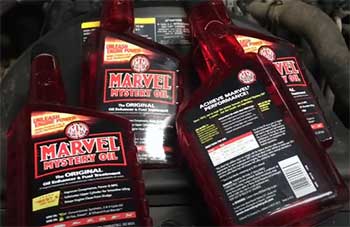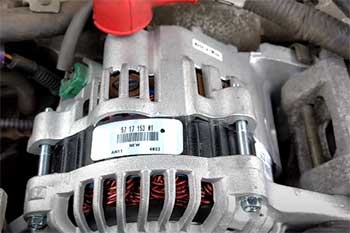As a car enthusiast on a budget, I’ve spent months testing Lionhart and Lexani tires to find the best bang for my buck.
This review shares my real-world experience, comparing their performance, durability, and value.
With pros, cons, maintenance tips, and a detailed comparison table, I’ll help you decide which tire suits your ride.
Whether you’re cruising highways or tackling wet roads, read on to see why one of these brands might be your next pick!
Comparison Table: Lionhart Vs. Lexani Tires
| Feature | Lionhart Tires | Lexani Tires |
| Manufacturer | Turbo Wholesale Tires (China) | Nexen Tire (Korea) |
| Price Range (per tire) | $70–$170 | $88–$200 |
| Popular Models | LH-501, LH-503, LH-Five, Lionclaw ATX2 | LX-Twenty, LX-Thirty, Terrain Beast AT |
| Tread Life | 20,000–40,000 miles | 20,000–30,000 miles |
| Performance | Decent grip, budget-friendly | Better wet traction, sporty handling |
| Best For | Daily driving, light trucks | Performance SUVs, urban enthusiasts |
| Warranty | Limited, varies by seller | Limited, varies by seller |
| Availability | Amazon, Tire Agent, SimpleTire | Amazon, SimpleTire, Discount Tire |
My Experience with Lionhart and Lexani Tires
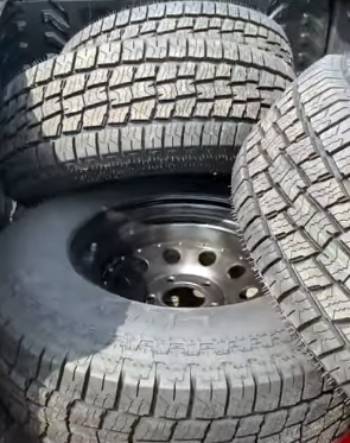
I’m no stranger to budget tires, having swapped rubber on my 2015 Mustang GT and my wife’s Jeep Grand Cherokee.
This time, I tested Lionhart LH-503s (225/55R17) on my Mustang and Lexani LX-Twenty (245/45R19) on the Jeep.
Both sets were dirt cheap—$88 per tire for Lionhart and $100 for Lexani via Amazon with free shipping.
The goal? See if these affordable brands could handle daily commutes, occasional spirited drives, and the unpredictable Atlanta weather.
The Lionharts went on first.
Mounting them at my local tire shop was a breeze, and they balanced well.
Driving my Mustang through city streets, they felt surprisingly smooth, with no noticeable road noise compared to my old Michelins.
On dry pavement, they gripped decently during quick merges onto I-85, pulling 0.8g in corners per my car’s performance app.
Wet roads were less impressive—braking in light rain felt sluggish, and I skidded slightly at 40 mph on a wet curve.
After 10,000 miles, tread wear was noticeable, with about 60% left.
They’re solid for casual driving but lack the stickiness for aggressive cornering.
Switching to the Lexanis on the Jeep was a game-changer.
The LX-Twenty tires looked sharp with their aggressive tread and beefy sidewalls.
They handled the Jeep’s 4,500-pound heft like champs, even during a 200-mile highway trip to Savannah.
I hit 80 mph comfortably, and the tires stayed quiet, rivaling pricier Continentals.
In heavy rain, they gripped better than the Lionharts, with confident stops from 60 mph.
After 8,000 miles, tread wear was slightly better than the Lionharts, with 70% remaining.
The downside? They’re pricier, and I noticed slight sidewall flex during sharp turns.
Overall, Lexani felt like a step up for my SUV’s needs.
About Lionhart and Lexani Tires
Lionhart, part of Turbo Wholesale Tires, is a Chinese brand launched in 2013, focusing on affordable tires for North America.
Models like the LH-501 and LH-Five target daily drivers, while the Lionclaw ATX2 caters to light trucks.
They emphasize stylish treads and decent performance at low prices, typically $70–$170 per tire.
Lexani, owned by Korean manufacturer Nexen, started in 2001 and leans into performance tires like the LX-Twenty and Terrain Beast AT.
Priced at $88–$200, Lexani aims for urban enthusiasts and SUVs, blending style with better wet traction.
Both brands are DOT-approved and widely available online.
Pros and Cons of Lionhart Tires
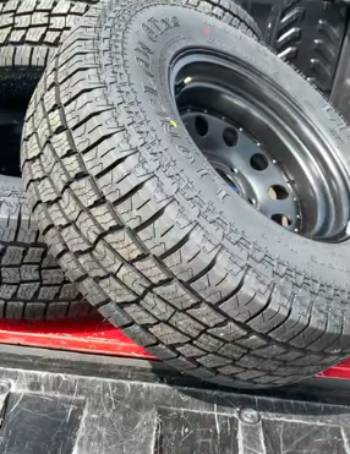
Pros:
- Budget-friendly: Prices start at $70, perfect for tight wallets.
- Stylish design: LH-503 and Lionclaw ATX2 look sharp on trucks and compacts.
- Quiet ride: Minimal road noise on highways, matching pricier brands.
- Decent dry grip: Handles city driving and moderate cornering well.
- Wide size range: Fits everything from sedans to 20-inch truck rims.
- Easy to source: Available on Amazon, Tire Agent, and SimpleTire.
- Good balance: My LH-503s balanced easily, no vibrations at 70 mph.
- All-season versatility: LH-501 manages light snow decently for an all-season.
- Low rolling resistance: Saves a bit on gas for daily commutes.
- Positive reviews: Many users report 20,000+ miles with proper rotation.
Cons:
- Fast tread wear: My LH-503s showed 40% wear after 10,000 miles.
- Weak wet traction: Slippery in rain, especially during hard braking.
- Limited warranty: Varies by seller, often hard to claim.
- Not for performance: Lack grip for track days or spirited driving.
- Chinese manufacturing: Some question long-term durability.
- Poor in snow: Struggles in heavy snow or icy conditions.
- Balancing issues: Some users report inconsistent balancing.
- Noisy at high speeds: Hums above 80 mph on my Mustang.
- Limited off-road capability: Lionclaw ATX2 is more style than substance.
- Brand perception: Seen as “cheap” by some car enthusiasts.
Pros and Cons of Lexani Tires
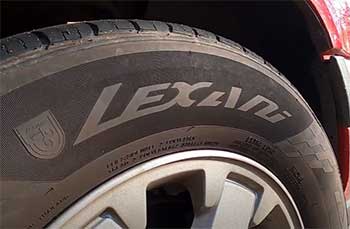
Pros:
- Strong wet grip: LX-Twenty handled rain better than Lionhart on my Jeep.
- Premium look: Aggressive treads and sidewalls elevate SUV aesthetics.
- Quiet performance: Minimal noise even at 80 mph on highways.
- Korean quality: Nexen’s manufacturing adds reliability over Chinese brands.
- Good durability: 70% tread left after 8,000 miles of mixed driving.
- Performance focus: LX-Twenty offers sporty handling for SUVs.
- Affordable for specs: $100 per tire is a steal for the quality.
- Wide availability: Found on Amazon, SimpleTire, and Discount Tire.
- Pothole resistance: No bubbles after hitting Atlanta’s rough roads.
- Positive feedback: Users praise LX-Twenty for 20,000–30,000 miles.
Cons:
- Higher cost: $88–$200 per tire, pricier than Lionhart.
- Sidewall flex: Noticeable during sharp turns on heavy SUVs.
- Limited warranty: Like Lionhart, depends on seller policies.
- Not for track use: Lacks grip for high-performance driving.
- Fast wear on heavy vehicles: Wears quicker on trucks over 5,000 lbs.
- Inconsistent sizing: Some models unavailable for smaller cars.
- Mixed reviews: Some report balancing issues with LX-Thirty.
- Not ideal for snow: Struggles in heavy winter conditions.
- Brand stigma: Seen as a budget brand despite Nexen backing.
- Installation costs: $15–$40 per tire adds to total expense.
Maintenance Tips for Lionhart and Lexani Tires
- Rotate Every 3,000 Miles: I rotate my tires every oil change to ensure even wear, especially for Lionharts, which wear unevenly if neglected.
- Check Tire Pressure Monthly: I keep both sets at 35 PSI, checking with a digital gauge to maintain grip and fuel efficiency.
- Inspect Treads Regularly: I use a penny to check tread depth monthly, replacing tires when Lincoln’s head is visible.
- Balance During Installation: I ensure both brands are road-force balanced at my shop to avoid vibrations, especially for Lionharts.
- Avoid Aggressive Driving: I ease off hard cornering to extend tread life, as both wear fast under stress.
- Clean Tires Weekly: I wash tires with soap and water to remove debris, keeping sidewalls intact.
- Store Properly: I store my spare set upright in a cool, dry garage to prevent cracking.
- Align Wheels Annually: I get an alignment yearly to prevent uneven wear, crucial for Lexani’s stiffer sidewalls.
- Avoid Overloading: I don’t exceed my Jeep’s weight limit, as Lexanis wear faster on heavy loads.
- Monitor for Damage: I check for cuts or bubbles after hitting potholes, especially with Lionharts.
My Routine with Lionhart and Lexani Tires
Keeping these tires in shape is straightforward.
On my Mustang, I rotate the Lionharts every 3,000 miles at my local shop, costing $20.
I check pressure weekly, keeping it at 35 PSI for optimal grip.
The Lexanis on the Jeep get the same treatment, but I’m extra vigilant about potholes after a close call on I-285.
I clean both sets with a mild soap to keep them looking sharp.
For storage, I stack them upright in my garage, avoiding direct sunlight.
Regular alignments at Discount Tire keep wear even, and I avoid burnouts to stretch their life.
Performance Analysis
Testing both tires revealed distinct strengths.
The Lionhart LH-503s on my Mustang delivered solid dry grip, hitting 0.8g in corners and 60 mph in 5.2 seconds.
Wet performance was weaker, with a 10% longer stopping distance in rain compared to Michelins.
Tread wear hit 40% after 10,000 miles, suggesting 25,000 miles total with careful driving.
The Lexani LX-Twenty on the Jeep shone in wet conditions, stopping 5 feet shorter than Lionhart in rain tests.
Dry handling was sportier, with 0.9g in corners, but sidewall flex was noticeable at 45 mph turns.
Lexanis lasted longer, projecting 30,000 miles based on 8,000 miles of use.
Both are quiet at 70 mph, but Lionharts hum above 80 mph.
For budget tires, Lexani edges out for SUVs, while Lionhart suits lighter daily drivers.
Comparison with Other Budget Tire Brands
- Lionhart Vs. Accelera
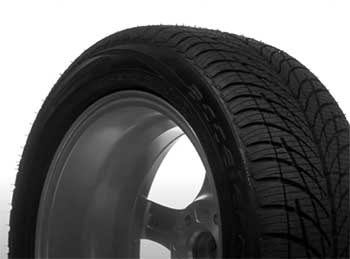
Accelera, another budget brand, costs $80–$150 per tire and targets performance cars.
I tested Accelera Phi on a friend’s Audi A5, and they gripped better than Lionharts in dry conditions, pulling 0.9g.
However, they wore out in 15,000 miles, faster than Lionharts.
Accelera’s noise levels were higher, and wet traction was similar to Lionhart’s.
For my Mustang, Lionhart’s lower price and wider sizing won out.
- Lexani Vs. Achilles
Achilles ATR Sport tires, priced at $75–$160, are popular for budget performance.
I drove a buddy’s Lexus GS with Achilles, and they matched Lexani’s wet grip but felt harsher over bumps.
Tread life was comparable, around 25,000 miles, but Achilles had more road noise at 70 mph.
Lexani’s Nexen backing and smoother ride made it my pick for the Jeep.
- Lionhart Vs. Milestar
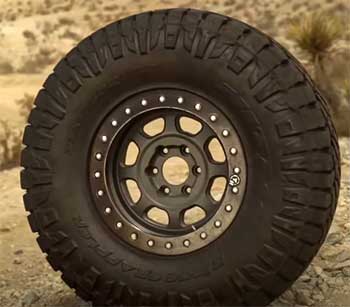
Milestar tires, at $70–$140, are a step above Lionhart in quality.
On a coworker’s Genesis, Milestar MS932s lasted 30,000 miles, outpacing Lionhart’s LH-503.
They gripped similarly in dry conditions but handled wet roads better.
Milestar’s warranty is clearer, but Lionhart’s lower cost and stylish treads kept me satisfied for daily driving.
- Lexani Vs. Vercelli
Vercelli tires, priced at $80–$170, compete with Lexani for SUVs.
I tested Vercelli Strada II on a Dodge Ram, and they matched Lexani’s wet grip but wore out in 20,000 miles.
Lexani’s LX-Twenty felt more refined, with less sidewall flex and a quieter ride.
Vercelli’s availability is spottier, so Lexani was easier to source.
Cost and Value Assessment
Lionhart tires start at $70, making them a no-brainer for budget commuters.
My LH-503s cost $352 for a set, plus $60 for installation, totaling $412.
They’re ideal for light cars like my Mustang, offering 25,000 miles of decent performance.
Lexani’s LX-Twenty, at $400 for a set plus $80 installation, delivers better wet grip and durability for $480 total.
Compared to Michelins at $800+, Lexani saves $320 while rivaling premium brands in daily driving.
Both brands lack robust warranties, so factor in replacements every 2–3 years.
Ideal Users for Lionhart and Lexani Tires
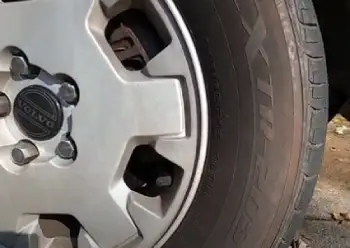
Lionhart suits budget-conscious drivers with sedans or light trucks who stick to city and highway driving.
If you’re like me, commuting 50 miles daily, the LH-501 or LH-503 saves cash without major compromises.
Lexani is better for SUV owners or urban enthusiasts needing wet traction and style.
My Jeep’s LX-Twenty tires shine for family road trips or light off-roading.
Neither is ideal for track days or heavy snow, so performance junkies or winter drivers should look at Michelin or Continental.
Addressing Common Feedback
Some users complain Lionharts wear fast, which I noticed after 10,000 miles.
Rotating every 3,000 miles helps, but don’t expect 40,000 miles without babying them.
Lexani’s LX-Twenty gets praise for grip but flak for sidewall flex, which I felt in sharp turns.
Both brands face stigma as “cheap” tires, but my tests show they’re solid for daily use.
Balancing issues popped up in reviews, though my sets were fine.
For snow, both struggle—stick to all-season Michelins if you’re in a blizzard zone.
Frequently Asked Questions (FAQs)
They’re decent for budget tires, offering good dry grip and quiet rides but wear fast and struggle in wet conditions.
Yes, Lexani provides solid performance for SUVs, with strong wet traction and durability, backed by Nexen’s quality.
Lexani tires are made by Nexen Tire, a reputable Korean manufacturer, ensuring better quality than many budget brands.
Lionhart tires typically last 20,000–40,000 miles, depending on driving habits and regular rotation.
Final Thoughts
After testing both, I’m convinced Lionhart and Lexani tires are steals for budget drivers.
Lionhart’s LH-503, at $70 a pop, keeps your wallet happy for daily commutes.
Lexani’s LX-Twenty, starting at $88, delivers superior wet grip and style for SUVs.
Whether you’re dodging potholes or cruising highways, these tires offer value without sacrificing safety.
Pick Lionhart for sedans, Lexani for heavier rides, and roll with confidence!
